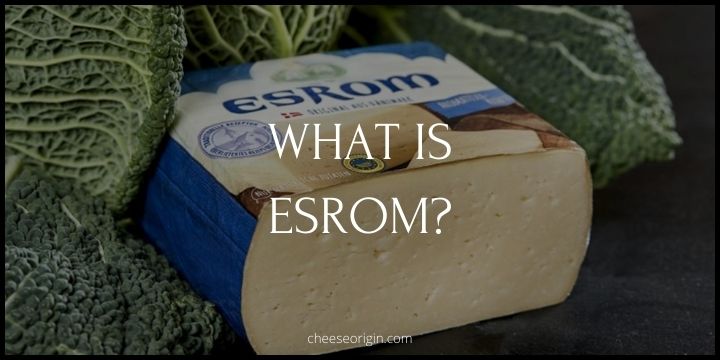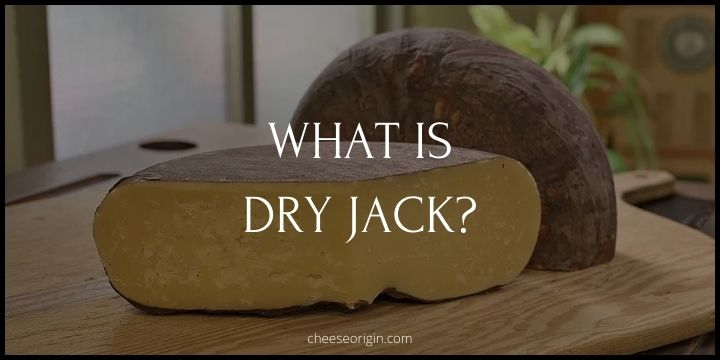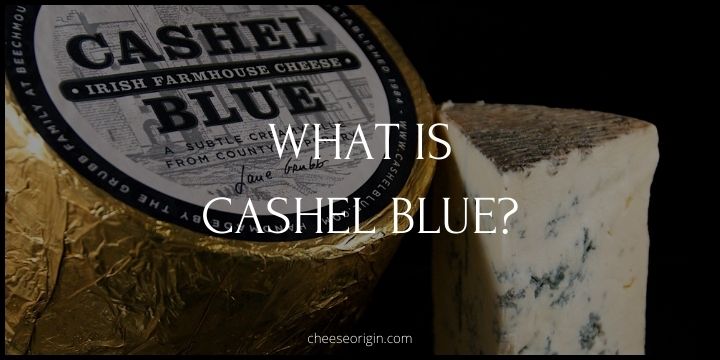What is Colby Jack? The Perfect Blend of Two American Classics

Today, we will embark on a culinary journey of discovery into one of America’s favorite cheeses.
This guide will take you through the fascinating history, intricate creation process, and versatile usage of the delightful combination of Colby and Monterey Jack cheese.
Whether you’re an ardent cheese connoisseur or a curious foodie, this guide will unveil the secrets of this unique marbled cheese that has been tantalizing taste buds for over a century.
From the lush dairy farms of Wisconsin to your dinner table, Colby Jack has a story that’s as rich and enticing as its flavor.
Quick Facts About Colby Jack
| Colby-Jack Cheese Quick Facts | Description |
|---|---|
| Origin | United States |
| Milk Source | Cow’s milk |
| Texture | Semi-soft and creamy |
| Flavor | Mild, slightly sweet with a hint of tartness |
| Color | Marbled with orange and white |
| Aging Process | It’s a young cheese, typically aged for 1 to 3 months |
| Uses | Great for snacking, sandwiches, and melting in dishes like quesadillas or casseroles |
| Production Process | Made by combining the curds of Colby and Monterey Jack cheeses while they’re still warm |
What is Colby Jack Cheese?

Colby Jack Cheese, also known as Co-Jack, is a classic American cheese originating from Wisconsin. It’s a unique blend of Colby and Monterey Jack cheese, hence the name.
The cheese is known for its distinct marbled appearance, with alternating layers of orange (from the Colby) and white (from the Monterey Jack). The process of making Colby Jack involves washing the curds, which reduces their acidity, leading to a sweeter, milder flavor.
The texture is semi-soft and easy to slice or cube, making it a versatile choice for many dishes. It’s perfect for melting over nachos, incorporating into macaroni and cheese, grating over salads, or simply enjoying on a cheese platter with fruits and nuts.
What does Colby Jack cheese taste like?
Colby Jack cheese is known for its mild flavor profile. It combines the characteristics of both Colby and Monterey Jack, resulting in a uniquely tasty blend. The Colby part contributes a slight hint of tanginess, while the Monterey Jack part adds a creamy, buttery taste.
Overall, Colby Jack has a mild, slightly sweet and creamy flavor.
It’s less sharp compared to cheddar, making it a great choice for those who prefer a more subtle cheese.
Its smooth and semi-soft texture further enhances its overall palate appeal. Whether eaten on its own or used in cooking, Colby Jack offers a delightful gastronomic experience.
Is Colby-Jack similar to Cheddar?
Yes and no. Both Colby-Jack and Cheddar are popular types of cheese that originated in the English-speaking world, but they have distinct differences in their flavor profile, texture, and production process.
| Features | Colby-Jack | Cheddar |
|---|---|---|
| Origin | United States (Wisconsin) | England |
| Flavor | Mild, slightly sweet, creamy | Strong, sharp, pungent (when aged) |
| Texture | Semi-soft, good for melting | Firm, varies with aging |
| Color | Marbled white and orange | Usually yellow to orange, can also be white |
| Aging | Usually young, not typically aged | Can be consumed young or aged for years |
| Uses | Sandwiches, nachos, cheese platters, cooking | Sandwiches, cheese platters, cooking, grating over dishes |
| Production Process | Combination of Colby and Monterey Jack cheeses | Unique “cheddaring” process |
Firstly, the flavor: Cheddar typically has a stronger, more pronounced flavor compared to Colby-Jack. Cheddar is often described as sharp or pungent, especially when it’s aged. On the other hand, Colby-Jack is milder and creamier, with a slight sweetness and less tanginess.
In terms of texture, both can be cut into slices or cubes, but Cheddar is often firmer, especially when aged, while Colby-Jack is semi-soft and tends to melt better, making it a popular choice for dishes that require melted cheese.
The production process also differs. Cheddar cheese is made by a unique process called cheddaring, where the curds are heated, cut, stacked, and turned repeatedly. Meanwhile, Colby-Jack is made by blending two separate cheeses, Colby and Monterey Jack, during the cheese-making process.
So, while there are similarities between Colby-Jack and Cheddar, they each offer a unique taste and texture that sets them apart.
>> Click here to read our in-depth guide on Cheddar
Which is healthier Colby Jack or Cheddar?
Colby Jack Cheese:
- Known to provide high-quality protein that is rich in all essential amino acids necessary for growth, development, and maintaining health.
- It’s a great source of calcium, which is vital for bone health.
- It’s low in saturated fat and contains no artificial colors or preservatives.
- It also provides many other essential nutrients, making it an overall healthy choice.
Cheddar Cheese:
- Cheddar cheese is typically higher in fat compared to Colby Jack.
- It’s a good source of calcium and protein.
From this comparison, Colby Jack cheese seems to offer more diverse nutrients and lower fats, making it potentially a better choice for those watching their fat intake or wanting a wider range of nutrients.
However, the exact nutritional content can vary depending on the specific brand and type of cheese. Always check the nutritional information on the label for the most accurate information.
Colby Jack Nutrition Facts
| Nutrition Component | Amount per 3.52 oz / 100g |
|---|---|
| Calories | 110 |
| Total Fat | 9g |
| Saturated Fat | 5g |
| Trans Fat | 0g |
| Cholesterol | 30mg |
| Sodium | 170mg |
| Total Carbohydrates | 0.5g |
| Protein | 6.8g |
| Calcium | Good Source |
Also read: Savor the Flavor: 20 Cheeses with the Least Lactose
What is Colby-Jack cheese similar to?
| Cheese | Origin | Flavor | Texture | Uses |
|---|---|---|---|---|
| Colby | United States (Wisconsin) | Mild to medium | Soft, elastic | Sandwiches, cheese platters, cooking |
| Monterey Jack | United States (California) | Mild, slightly sweet | Semi-hard, good for melting | Quesadillas, macaroni and cheese |
| Young Gouda | Netherlands | Mild, slightly sweet | Semi-soft to hard, depending on age | Sandwiches, cheese platters, cooking |
| Havarti | Denmark | Mild, slightly sweet | Semi-soft, creamy | Sandwiches, cheese platters, cooking |
Colby cheese, originally from Colby, Wisconsin, is similar to cheddar but does not undergo the cheddaring process. Therefore, it has a softer, more elastic texture and a mild to medium flavor.
Monterey Jack cheese, on the other hand, is an American white, semi-hard cheese made using cow’s milk. It is known for its mild flavor and slight sweetness. It melts well, making it a popular choice in dishes like quesadillas and macaroni and cheese.
So, in essence, any cheese that has a mild, slightly sweet, and creamy flavor with good melting properties could be considered similar to Colby-Jack. This includes cheeses like young Gouda or Havarti.
What is Colby-Jack cheese mostly used for?
Colby-Jack is a versatile cheese that’s used in various culinary applications due to its mild flavor and smooth, semi-soft texture.
Here are some of the most common uses:
- Sandwiches and Burgers: Colby-Jack is perfect for adding a creamy, melty layer to sandwiches and burgers.
- Cheese Boards: Its pleasant mildness and color make it a popular choice for cheese boards.
- Baking: It can be used in baked dishes like casseroles, macaroni and cheese, or cheese-stuffed breads.
- Salads: Shredded Colby-Jack can be sprinkled over salads for an extra touch of flavor and texture.
- Pizza Topping: It can be used as a topping on pizzas, mixing well with other cheeses.
- Snacking: Colby-Jack is great for snacking on its own or with crackers.
What goes well with Colby-Jack cheese?
Food that goes well with Colby-Jack
| Food Category | Pairings |
|---|---|
| Breads and Crackers | Whole grain bread, baguettes, crackers |
| Meats | Grilled chicken, turkey, ham, bacon |
| Fruits | Apples, pears, grapes |
| Nuts | Almonds, walnuts, pecans |
| Vegetables | Bell peppers, olives, tomatoes |
| Condiments | Mustard, sweet relish, pickles |
| Desserts | Dark chocolate, figs, dates |
Also read: What Fruit Goes on a Charcuterie Board?
Beverage that goes well with Colby-Jack
| Beverage Category | Pairings |
|---|---|
| Wine | Merlot, Cabernet Sauvignon, Chardonnay |
| Beer | Pale Ales, Lagers, Brown Ales |
| Non-Alcoholic Drinks | Apple Cider, Grape Juice, Iced Tea |
Also read: Best Wine and Cheese Pairings: The Ultimate Guide
The History of Colby-Jack
Colby-Jack cheese is an American original, born from the combination of two other American cheese varieties, Colby and Monterey Jack.
Colby cheese was first created in 1885 by Joseph F. Steinwand in Colby, Wisconsin. He developed this cheese by modifying the process for making cheddar cheese, producing a cheese that was softer, moister, and milder in flavor.
Monterey Jack, on the other hand, has a history that dates back to the 1700s in California. It’s named after Monterey, California, where it was originally made by the Spanish Franciscan friars. The “Jack” part of its name comes from David Jacks, a businessman who commercialized the cheese in the late 19th century.
Colby-Jack cheese, also known colloquially as Cojack, is a mixture of these two cheese types. It’s made by combining the curds from Colby and Monterey Jack cheeses during the cheese-making process. The result is a marbled cheese that combines the mild flavor of Colby with the creamy texture of Monterey Jack. This cheese is usually produced in a semi-hard block or cylindrical shape, with a distinctive orange and white marbling effect.
The exact date of when Colby-Jack was first created is not clear, but it’s safe to say it’s been a staple in American households for many decades. Today, it’s enjoyed in a variety of dishes, from sandwiches and burgers to casseroles and cheese boards.
Frequently Asked Questions
1. What is another name for Colby Jack cheese?
Another common name for Colby-Jack cheese is “Cojack.” This is a portmanteau of the names “Colby” and “Monterey Jack,” the two cheeses that are combined to make this particular variety.
2. How do I store Colby Jack cheese?
Storing Colby Jack cheese properly can help preserve its quality and extend its shelf life. Here are the steps to follow:
- Wrap it well: After you’ve opened the original packaging, wrap the remaining cheese tightly in wax paper or parchment paper. This will allow the cheese to breathe while still protecting it from drying out.
- Seal it: After wrapping in paper, place the cheese in a resealable plastic bag or airtight container. This provides another layer of protection and prevents the cheese from absorbing other flavors in your fridge.
- Keep it cool: Store the cheese in the coolest part of your refrigerator, typically the vegetable drawer or a dedicated cheese drawer if your fridge has one. The temperature should ideally be between 35-40°F (1-4°C).
- Don’t store it too long: Even when stored properly, Colby Jack cheese is best consumed within 3-4 weeks after opening.
- Check for spoilage: If you notice any signs of mold or an off smell, it’s best to throw the cheese away.
Each time you serve the cheese, try to bring it to room temperature before eating to enhance its flavor. Then, re-wrap it carefully and return it to the fridge.
3. Is Colby Jack good for grilled cheese?
Yes, Colby Jack is an excellent choice for grilled cheese. Its mild flavor and semi-hard texture make it perfectly suitable for melting, which is a key characteristic for any good grilled cheese sandwich.
In fact, many food bloggers and chefs recommend it as one of the best cheeses for this beloved comfort food.
4. Can you eat Colby Jack cheese when pregnant?
Yes, you can eat Colby Jack cheese when pregnant. Hard cheeses like Colby Jack are generally safe for consumption during pregnancy. This is because they’re typically made from pasteurized milk which eliminates any potentially harmful bacteria.
Healthline includes Colby Jack in its list of cheeses that are safe to eat during pregnancy.
Similarly, Pregnancy Food Checker confirms that all hard cheeses, including those made from pasteurized or unpasteurized milk, are safe because they contain less water, which makes it harder for bacteria to grow.
Also read:
- The Ultimate Guide to Gruyère: A Swiss Delicacy
- A Guide to Provolone: A Masterclass in Flavor and Versatility
- Pecorino Romano: The Ultimate Guide to Italy’s Age-Old Cheese
- Utz Cheese Balls: The Ultimate Guide (Taste the Tradition)
- Best Wine and Cheese Pairings: The Ultimate Guide
- Cheese Curds: The Unsung Heroes of the Dairy World
- Fior di Latte: A Comprehensive Guide to Italy’s Creamy Delight





